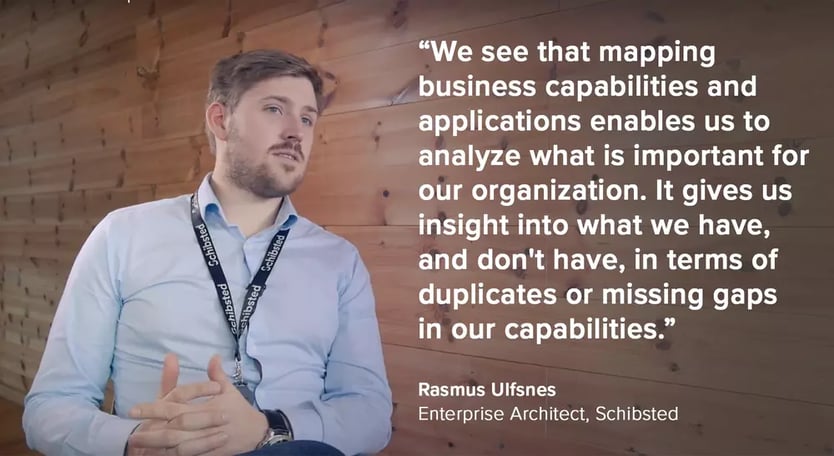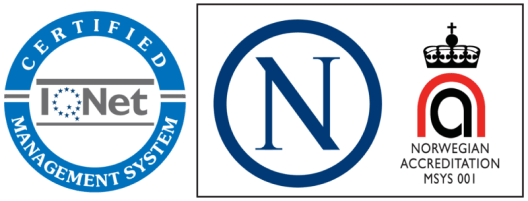When Schibsted started to merge from a split company to one entity, they immediately faced a challenge. They needed to transform from a company with several IT departments with differing ways of work, to one department with several portfolios. In order to merge, it was critical that they have an architectural overview and the tooling to oversee and handle their data. They knew they should start their documentation journey, it was just a question of where.
Schibsted at a Glance
- An international family of digital brands
- Leading provider of online marketplaces in the Nordics
- Largest media group in Scandinavia
- Headquarters in Oslo
- Over 5000 employees
A Flexible Enterprise Architecture Documentation Tool
The Enterprise Architecture (EA) team faced a complex challenge. They wanted an architectural overview and tooling to gather, oversee, and handle their data as they built their structure throughout the merging process.
To overcome these challenges, Schibsted chose Ardoq because it gave them the needed flexibility in their enterprise architecture tool. Rasmus Ulfsnes, Enterprise Architect at Schibsted, became the driver behind the documentation process. To make sure the relevant services matched the company’s current position and aligned with their future plans, he mapped their existing application portfolio with Ardoq. Rasmus says, “Along the way, we have been able to influence the development of the platform. The people at Ardoq not only build their platform from their perspective but from the customer's perspective as well.”
“Another reason why we chose Ardoq was because...we shared their opinions and ideas on how to work with data, and this let us have more of a partnership with them, rather than a customer relationship."
Complete Enterprise Architecture Governance
Ardoq provides Schibsted with a solution that gives them the full overview of what is being done in different areas of their enterprise architecture. Now with that overview, Schibsted can see everything, whether it’s the processes, information, applications, services, or down to the underlying infrastructure -- cloud, or on-premise.
Ardoq’s Business Capability Modeling module includes everything you need to get started in mapping out your capabilities and identifying points of improvement, investment, risk, and alignment. The best practice approach includes surveys, calculated fields, dashboards, and pre-configured reference models. Also, you can use one of our many industry-specific capability models to get your project kick-started.
The Key to Optimization: Integrations and Collaboration
To optimize their information collection and increase the value of their insights, Ulfsnes and his team have integrated Ardoq with a variety of data sources. Previously, Ulfsnes had islands of disconnected information. Now he has started to build a detailed picture, bringing multiple sources into one platform using Ardoq‘s out-of-the-box integrations and open rest-API.
To build a more complete picture, the EA team is collaborating across the company using Surveys. They have rolled out a set of tailored surveys to targeted roles and groups outside the enterprise architecture team. Combining the automated and the manual sources, Schibsted is now gaining an actionable overview to drive value through successful change.
“Because data inherently has an expiration date, it’s important for us to interact regularly with the rest of the organization, not just the IT department”.
Though the team is trying to automate as much of the documentation as possible by using Ardoq’s integration features, there are still parts of the documentation that are not possible to automate. To keep the rest of the documentation up to date and valuable, they use surveys to collaborate and connect with stakeholders.
Use the survey feature in Ardoq to crowdsource information from the business. Surveys allow more users to contribute without having to learn how to use another tool. The possibility to create custom surveys for specific users/users groups gives you full control of the data and updates.
In the future, Ulfsnes envisions Ardoq as the go-to tool for insight sharing. He notes, “By being a flexible and agnostic platform, Ardoq helped us solve the initial challenge we had with lack of oversight and information. My advice for those with similar challenges is to look at the data you have, and start building on this data because that's your main asset. That's what gives you value to understand what you're doing now and what you should do next time.”
How Schibsted Used Ardoq to Merge IT Departments
When Schibsted faced the challenge of merging a split company into one entity, they needed an overarching tool to handle their data.
- Ardoq gives them data-driven tooling that allows them to build the structure as they documented data
- Using Business Capability Modeling, they can identify points of improvement, note investment and see potential risk.
- The collaborative approach to collecting data helps them crowdsource information giving them a more complete overview of the companies’ governance while building their data assets.
Discover how Ardoq can help you, book a demo today.
 Katrine Ascic
Katrine is Ardoq's Brand Marketing Manager, making sure we look good no matter where we go. A multi-talent, Katrine leads Ardoq's events, including the incredibly popular Amplify series.
Katrine Ascic
Katrine is Ardoq's Brand Marketing Manager, making sure we look good no matter where we go. A multi-talent, Katrine leads Ardoq's events, including the incredibly popular Amplify series.







